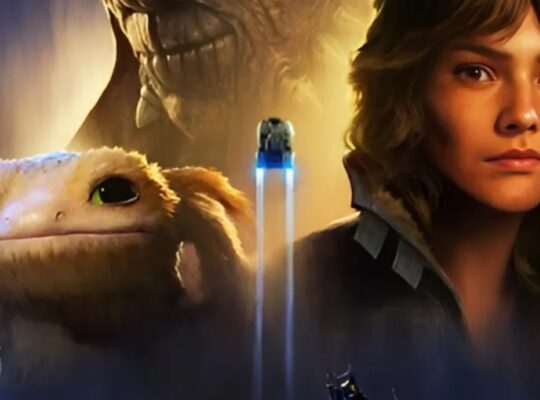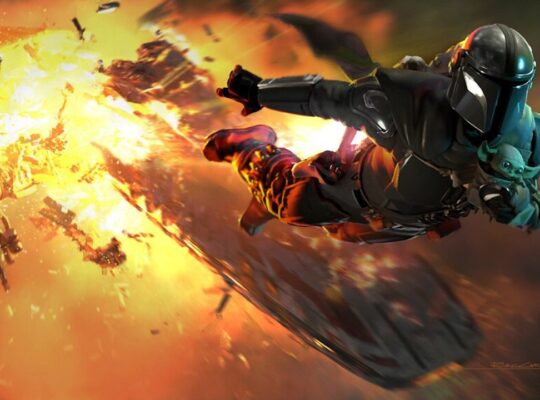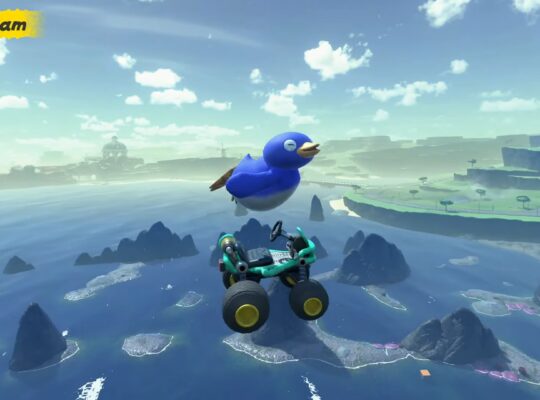There’s a purely primal pleasure in stacking things up and then watching them fall down: witness how it’s one of the earliest activities children learn to play by themselves. And however much we might grow up and think of ourselves as mature, sober citizens, you can still get a frisson of that pleasure by organizing a closet, or watching a tower block demolished. So why not go the whole hog and indulge that secret pleasure with one of the very best dexterity games on the market?
TL;DR: These Are the Best Dexterity Games
Junk ArkNekojimaCatacombsKlaskTinderbloxJengaCrokinoleDungeon FighterJungle SpeedKabuto SumoDrop ItHamster RollLooping LouieRhino Hero
Junk Art
Why pick one best dexterity game when you can have them all in a single box? That’s essentially what Junk Art is. The box contains four colored sets of oddly-shaped pieces and a deck of matching cards, alongside another set of cards to determine what mini-games you’re going to play with them. They range from traditional stacking affairs, to co-operative piling, to passing the most awkward pieces to your neighbor and even playing a trick-taking game to get the best pieces. There are additional blank cards to make your own, and an internet full of suggestions. With no two games ever likely to be the same and a range of dexterity and strategic challenges, this could be the only activity game you ever need.
Nekojima
If you want a stacking game that retains the simple, accessible delights of piling things on top of each other, but want it to look better and play more peculiarly than Jenga, look no further than Nekojima. Here, you’re piling pairs of poles rather than blocks, but the big catch is that each couplet is connected by a length of stiff cord, which mustn’t touch any other cords or poles once placed. That gives the game a fascinating edge when it comes to calculating how you can help or hinder the following plays. There are also cardboard cats you must occasionally hang from the growing network, following the same no-touch rule. Easily learned, and just as fun whether you’re playing solo, competitively or cooperatively, this is a modern classic for all ages.
Catacombs
Dexterity games tend to be about stacking things, or balancing things or – as in the case of Catacombs – flicking things. But here those simple, accessible delights are used as a base layer on which to paste the additional mechanics of a fantasy adventure game. The board becomes a dungeon room, the heroes and monsters discs that can be flicked for movement, while attacks, spells and missiles are smaller projectiles to bounce around the arena. It’s a brilliant combination, offering a fast-playing quest game with multiple upgrade paths for your heroes and a randomised dungeon each time for huge replay value as well as the huge fun of flicking discs.
Klask
Klask is one of those absurdly simple ideas that makes you wonder why no-one thought of it before. Each player controls a piece on the board using a magnet underneath, which they push around to hit a tiny plastic ball careening around the tray-like playing surface. There’s an indent in each end which counts as a goal, and the – ahem – goal is to push that ball into the opponent’s indent while defending your own. There’s a lot of speed and skill to this pursuit, far more than it may initially seem, and that would be enough to win it a space on this list. But the kicker is that the field is also littered with magnetic obstacles that will stick to your paddle if you get too close, upping both the skills and thrills in one fell swoop.
The Best Boardgame Deals
Tinderblox
The joy of Tinderblox is its tiny mint-tin scale. Within is a simple yet devious stacking game where you manoeuvre mini-blocks onto a stack of firewood and coloured flame cubes using a pair of supplied tweezers. When it’s your turn, the items you need to add to the pile are dictated by a card draw. Sometimes it’ll be a little stack of its own, a stick and a fire cube, that you must keep balanced as you manoeuvre it into position. Sometimes the card will also tell you to swap hands for added challenge. It’s the stacking game reduced to its absolute bare essentials, put in a super-portable package that you can take anywhere on the off-chance of players, and with bright colors that make it look great on the table even in miniature. Its ongoing appeal is a testament to the basal satisfaction of trying to put things in a nice, even pile.
Jenga
This is a game that pretty much everyone is familiar with, but there are a few fascinating facts about Jenga that might make a more interesting pick than you realize. First, despite its ubiquity, this isn’t any kind of ancient classic – it was invented in 1983 by Leslie Scott. Second, her particular innovation, which is common to all branded versions of this venerable stacking game, is that all the blocks are made to be slightly different from each other, creating imperfections that make the behavior of the stack far harder to predict. Factoids that are not only great for dinner parties, but also for getting an edge in the after-dinner games when the stacking blocks come out.
You can also choose to go with giant Jenga, which is a jumbo-sized version of the original that makes for a great yard game.
Crokinole
If you want a genuinely old dexterity game that still has teeth, look no further than Crokinole. It dates back to at least the mid-1800’s in Canada and is quite possibly older as a folk game. Most boards nowadays are mass-produced, but it’s still possible to buy handmade ones, which will set you back a pretty penny. It’s a flicking game where you’re trying to score by getting your discs as far into the board as possible, particularly the central region which is ringed by pegs. But in order to be valid, your shot must cause at least one opposing disc to move, otherwise it’s removed. This gives the game a strategic edge on top of the considerable flicking chops that it demands, as you’re always trying to clog up your opponent’s opportunities to hit your discs while freeing up your own.
Dungeon Fighter
There’s a surprising amount of dexterity games that weave in a fantasy or a sci-fi themes, and Dungeon Fighter is the current king of the pile. It’s a cooperative game where players each have a character in an adventuring party seeking to loot a dangerous dungeon. Whenever you encounter one of the game’s frequent monsters you fight it by throwing dice, as you might expect, but the twist is that you’re rolling onto a target board which will do damage depending on where the dice stops. If it rolls off, or falls into one of the gaps on the board, it’s a duff blow. With plenty of variety in character, dungeon and monster cards and a high skill ceiling, increased by the various bizarre throwing methods mandated by certain monsters, such as flicking dice off the back of your hand, it’s a delightful mix of challenge, narrative and tomfoolery.
Jungle Speed
If you’ve ever felt that the beloved children’s classic card game snap was missing a vicious and sometimes bloody edge, then do we have a game for you. The core of the game is just like snap: players turn over cards one at a time and look for matches. But sat in the middle of the table is the sinister, brooding totem, and players with matching cards are instantly catapulted into a race to grab it first. The looser has to take all the played cards so far and, quite probably, nurse any number of bruises, scratches and sprains gained in the struggle for supremacy. Add in a few special-effect cards, including one that has all players grabbing for the totem, and you’ve got a modern classic. Just make sure all the players trim their fingernails first.
Kabuto Sumo
There’s a general tendency for dexterity games to revolve around stacking things, or grabbing things or throwing things. But Kabuto Sumo has a whole new take on the genre, inspired by penny waterfall arcade machines. The player’s beetle pieces square off on a platform, surrounded by wooden discs. Then you take turns pushing oddly-shaped objects onto the platform, trying to nudge your opponents off the edge and collecting any non-player shapes that fall. It’s simple yet skilful and wholly engrossing as you try and work out all the angles and impacts required for maximum movement. A slew of different wrestlers with their own push-on shapes and special powers further increases the game’s staying power.
Drop It
There’s a very obvious bridge between video games and dexterity board games, but it’s rarely been so direct as it is in Drop It. Players take turns selecting from a variety of colored shapes and dropping them into the playfield, which is two upright transparent sheets with a thin space between them to hold the shapes in place. The higher your shape is atop the stack of existing pieces when it lands, the more you will score. But be careful: if you touch any other pieces of the same shape or color, you get nothing. This gives piece selection a frisson of strategy, dropping them a frisson of skill and the sheer unpredictable way all those shapes shift and roll off each other give it a whole lot of fun and excitement.
Hamster Roll
Hamster Roll – often known by its original German name Hamsterrolle – is a balancing game with a unique twist. Rather than trying to balance your blocks atop each other in a tower, everyone is placing their pieces into slots on a giant wheel, trying to keep it as balanced as possible. If your placement causes the wheel to shift and pieces fall off, then you have to collect them and add them to your stash. First player to get rid of all their pieces wins. The sheer unfamiliarity of this is a big draw and, once you’re in, you’ll discover there’s a surprising amount of strategy to it as well, as you try to anticipate where following players might try and slot their pieces and torpedo those moves by blocking slots or throwing the balance off-whack. But watch out: get too tricksy, and it’ll end up being you picking up the pieces instead.
Looping Louie
While this was very obviously designed and marketed as a children’s game, it’s found a surprising fan base among older players as well. Thanks to an electronic gizmo, Louie pilots his little aeroplane in a circle above each player’s chicken coop, trying to knock their chicken discs off their perches. Loose them all and you’re out of the game. But you have a secret weapon: in front of your coop, there’s a paddle you can use to try and lift Louie above and save a chicken. It’s about as simple and fast as it’s possible for a game to be, but it also happens to be hilarious to play as Louie spins and dives about at unpredictable angles. And for the truly accomplished, there’s the perfect shot to practice and aim for, lifting Louie just the right height to clear an opponent’s paddle and dive straight into their coop.
Rhino Hero
Another children’s game that turns out to have a lot of appeal for adults, Rhino Hero, and its big buddy Super Rhino Hero, bring a load of super-powered character to the pleasure of stacking things high. In this original version of the game, players get a random stack of roof cards which they must add to the growing tower, supported by two right-angled wall cards. Stack carefully: although this is a fairly stable construct, you’ll be out of the game if you cause it to fall. The real fun is in the hidden powers of the roof cards that are revealed when you play them, which range from weirdly-angled walls to placing and moving the titular hero up the tower with great care, lest his pachyderm might cause the cards to fall!
For more, be sure to check out our picks for the best board games of all time, as well as the best party games for when you have people over, and the best solo board games for when you don’t.
Matt Thrower is a contributing freelancer for IGN, specializing in tabletop games. You can reach him on BlueSky at @mattthr.bsky.social.












